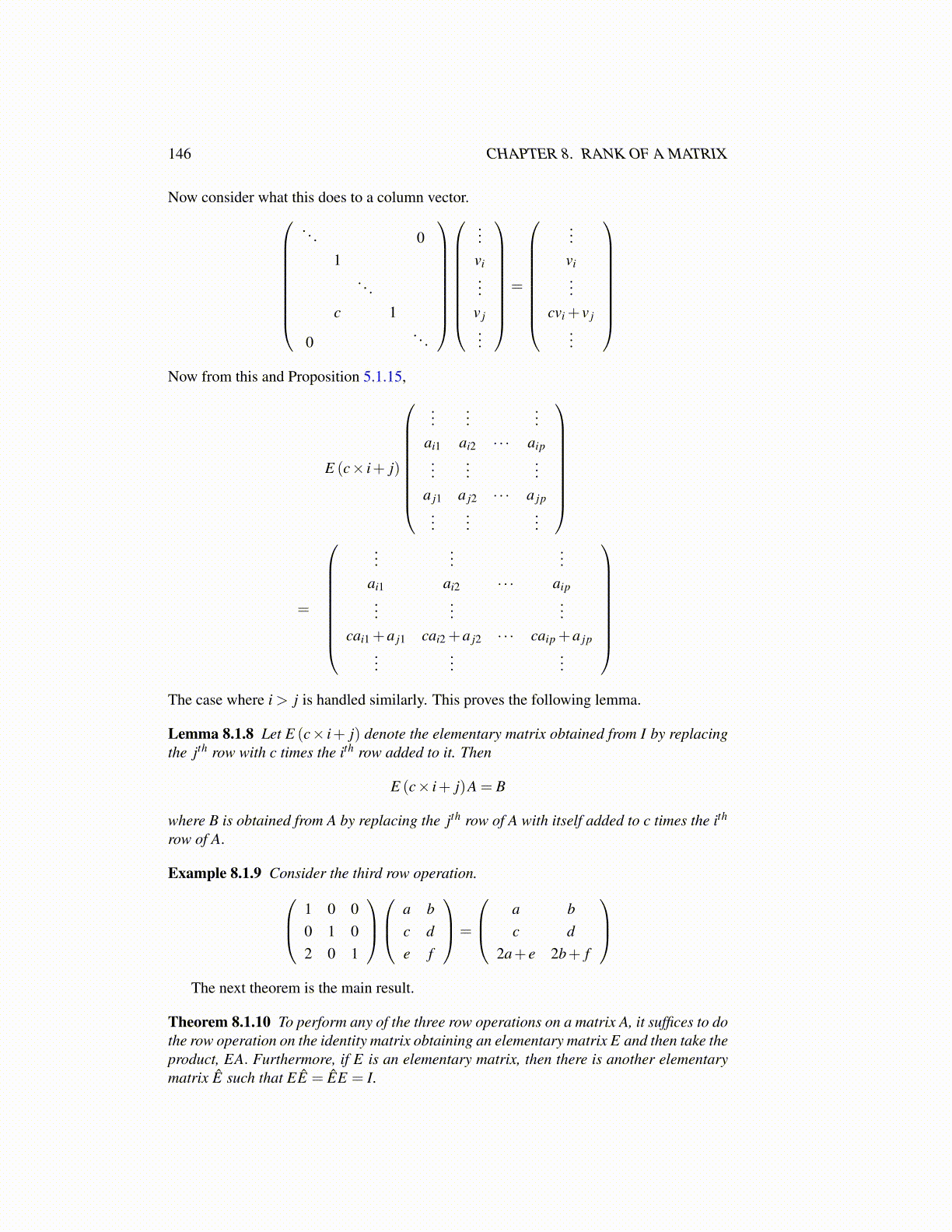
146 CHAPTER 8. RANK OF A MATRIX
Now consider what this does to a column vector.
. . . 01
. . .
c 1
0. . .
...vi...
v j...
=
...vi...
cvi + v j...
Now from this and Proposition 5.1.15,
E (c× i+ j)
......
...ai1 ai2 · · · aip...
......
a j1 a j2 · · · a jp...
......
=
......
...ai1 ai2 · · · aip...
......
cai1 +a j1 cai2 +a j2 · · · caip +a jp...
......
The case where i > j is handled similarly. This proves the following lemma.
Lemma 8.1.8 Let E (c× i+ j) denote the elementary matrix obtained from I by replacingthe jth row with c times the ith row added to it. Then
E (c× i+ j)A = B
where B is obtained from A by replacing the jth row of A with itself added to c times the ith
row of A.
Example 8.1.9 Consider the third row operation. 1 0 00 1 02 0 1
a b
c de f
=
a bc d
2a+ e 2b+ f
The next theorem is the main result.
Theorem 8.1.10 To perform any of the three row operations on a matrix A, it suffices to dothe row operation on the identity matrix obtaining an elementary matrix E and then take theproduct, EA. Furthermore, if E is an elementary matrix, then there is another elementarymatrix Ê such that EÊ = ÊE = I.